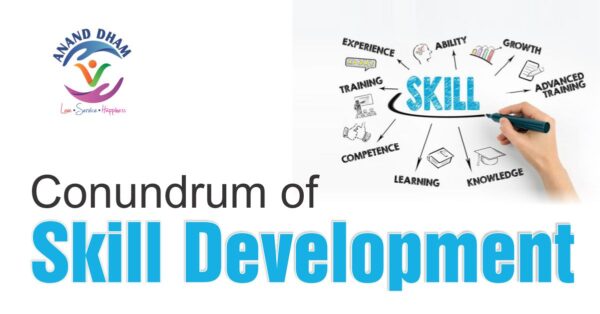
The human capital is key to the growth of any country. India is standing at the stage where 65% of its population is below the age bracket of 35 years and 50% of its population below 25 years. This demographic window creates a unique opportunity for the economic growth of a nation and individuals in particular. However, this demographic dividend is a dual-edged sword. If utilized in a better way, by creating opportunities for livelihood; it can pay dividends else it could become an obstacle in the growth of a nation.
Skill development is a key strategy to realize this short window of demographic dividend which is available to us. The success of government efforts like Digital India, Skill India, and Smart Cities will majorly depend upon the education and skill level of its people. However, in the current scenario, India has 487 million workers and over a million join the labor force every month. The latest India skill Report indicates that only about 47% coming out of educational institutions are employable. This shows there is a huge mismatch in skill demanded and supplied. Despite there are many initiatives taken by both the public and private sector, many challenges in the skill development landscape still exist. Some of the challenges as follows:
Technology and Skills
The skill development landscape is quite dynamic. With technological evolution like artificial intelligence, the Internet of Things, etc.; the nature of skill demanded also evolving with time. Industry 4.0 is moving towards automation and the skills required will be different from what is needed today or earlier. That generates a fear about the employability of the existing workforce, especially in small and medium industries. So designing a skill development ecosystem according to the evolving technological needs of industry is a must. Much emphasis should be given on reskilling and upskilling the existing employed manpower could be one way out to keep the existing workforce relevant.
Social Attitude towards skilling
Social attitude towards blue-collar jobs is another obstacle to skill development. The acceptance of vocational courses vis-a-vis the educational courses is still low. Generally, it has been seen that the acceptability of vocational courses like a welder, plumber, electrician, etc is low among the students and the parents. To break this societal notion, children in school must be sensitized that no work is inferior. Gradually awareness campaigns can be extended to parents and other stakeholders.
Organized sector and apprenticeship
In India, the formally trained workforce stands at 4.63% which is very low if we compare the numbers in Germany where a trained workforce is 75%, and in South Korea, the percentage stands at 96%. Through Apprenticeship, rules are very much relaxed now and greater emphasis has been given to apprenticeship. Since the organized sector is very small, an apprenticeship boost up will take time. GST and other initiatives have started the formalization process but still have a long way to go. At the same time, the rejuvenation of the ITIs will shoot in the arm of the skill development initiative.
Placements of trained people
Since there is no direct link between the training partner (selected by the government) and industry. This led to the creation of a gap in skill demanded by industry and skill supplied. Result in this, training partners complain about not having enough jobs for placements. On the other hand, the industry complains about not having enough people to meet their requirements.
To conclude, India has a huge demographic advantage vis-a-vis many developed countries; where the share of the aged population is very high. At the same time, if we look at China, the demographic structure has also changed a lot of post-one-child policy. This creates an opportunity for us to become a global supplier of a skilled workforce. Towards achieving this objective of nation-building, Anand Dham Trust envisions to work towards empowering the disempowered section of the society. So that they can live with dignity and contribute meaningfully to the growth of the country.



